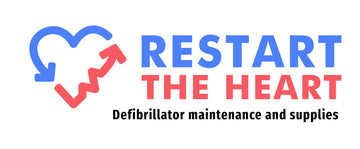The Role of AEDs in Workplaces and Australian Workplace Regulations
Cardiac emergencies can strike anywhere, even in the workplace. With sudden cardiac arrest (SCA) being one of the leading causes of death in Australia, having an automated external defibrillator (AED) at work can be a life-saving measure. It is crucial for businesses to understand the importance of AEDs, Australian workplace regulations, and practical implementation strategies to create a heart-safe working environment.
In this blog, we will explore the benefits of AEDs in the workplace, with a specific focus on Australian workplace regulations and guidelines relating to AEDs. We will offer guidance on best practices for implementing a successful workplace AED program, ensuring that your workforce is protected and prepared in the event of a cardiac emergency.
Benefits of AEDs in Workplaces
Creating a Heart-Safe Work Environment
Implementing AEDs in workplace settings provides numerous benefits for businesses and employees alike. Here are some key reasons to consider implementing AEDs in your workplace:
- Increased Employee Safety: Having AEDs readily available can significantly improve employee safety and well-being. By providing access to these life-saving devices, employers demonstrate a commitment to creating a heart-safe environment for their staff.
- Improved Survival Rates: Immediate access to AEDs can increase survival rates for sudden cardiac arrest victims, as every minute counts during these emergencies. AEDs can be the difference between life and death when implemented in conjunction with CPR.
- Enhanced Corporate Reputation: Businesses that invest in AEDs can benefit from a positive corporate image, as it showcases their social responsibility and commitment to promoting a heart-safe environment for both employees and clients.
- Potential Reduction in Workers' Compensation Claims: By mitigating the risk of fatalities from sudden cardiac arrest, businesses may experience a reduction in workers' compensation claims and potential legal liabilities that arise from on-site cardiac emergencies.
Australian Workplace Regulations
Understanding AED Requirements
While there are currently no nationally legislated mandates requiring the implementation of AEDs in Australian workplaces, various guidelines and recommendations from federal and state levels can provide direction for businesses:
- The Australian Resuscitation Council (ARC) recommends that organisations at high risk for cardiac emergencies should have AEDs available. High-risk environments include large workplaces, facilities with older employees, high-stress work environments, and sites prone to cardiac arrest incidents.
- Safe Work Australia, the national agency responsible for workplace health and safety, strongly advises that organisations consider the implementation of AEDs in their emergency response procedures.
- Several Australian states have specific guidelines or requirements for AEDs in certain industries or circumstances. For example, Victoria mandates AEDs for dental surgeries that administer general anaesthetic, while New South Wales requires AEDs for public swimming pools. It is essential for businesses to review their respective state guidelines and industry-specific requirements.
Best Practices for Workplace AED Programs
Implementing AEDs Successfully in Your Workplace
Effectively implementing an AED program in your workplace involves several key steps:
- Device Selection: It is crucial to choose an AED device that meets Australian regulatory requirements, is user-friendly, and caters to your specific workplace needs. Consult a trusted defibrillator supplier, such as Restart the Heart, for guidance on selecting suitable devices.
- AED Placement: Install AEDs in easily accessible and highly visible locations, ensuring that devices can be reached within a few minutes during emergencies. Consider areas with high foot traffic and locations near high-risk areas where SCAs may occur.
- Staff Training: Provide AED and CPR training to a designated team or a significant portion of your workforce, ensuring that multiple staff members know how to respond in the event of a cardiac emergency. Regular refresher courses can enhance employee confidence in using AEDs and performing CPR.
- Maintenance and Monitoring: Develop a routine maintenance schedule for your AED devices, including visual inspections, battery and pad replacements, and device updates as needed. This consistent monitoring is crucial for maintaining device functionality during emergencies.
Restart the Heart Support for Workplaces
Your Partner in AED Implementation and Maintenance
Restart the Heart can partner with your business to ensure successful AED implementation and maintenance, providing expert advice, training, and ongoing support for your workplace AED program:
- AED Device Selection: Restart the Heart can guide you in selecting the most suitable AED device for your specific workplace needs, ensuring compatibility and compliance with Australian regulations.
- Training and Education: Partner with Restart the Heart to provide comprehensive AED and CPR training for your employees, empowering them with life-saving skills.
- AED Maintenance Support: Rely on Restart the Heart for support in maintaining your AED devices, including the supply of AED pads and batteries for all brands.
- Ongoing Customer Care: With Restart the Heart's commitment to exceptional customer care, your business will receive ongoing support for all your AED program requirements.
Conclusion
The presence of AEDs in workplaces is becoming increasingly common in Australia, as more businesses recognise their life-saving potential. By understanding the benefits and workplace regulations surrounding AEDs, businesses can proactively implement strategies to create a heart-safe work environment for employees and clients alike.
With the support of Restart the Heart, businesses can confidently establish and maintain workplace AED programs, ensuring the safety and well-being of all stakeholders. Embrace the benefits of a heart-safe workplace, and join the increasing number of organisations that are prioritising the health of their workforce through AED implementation.

